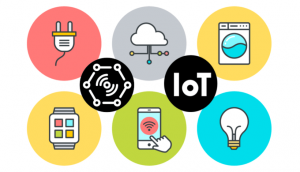 IoT devices are slowly spreading everywhere, even in bedrooms. The cost of IoT sensors and device acquisition is reducing. The number of such gadgets is set to cross the 20 billion mark by 2023. Thus, the Internet of Things network and device security are factors that developers wish to focus upon these days. For addressing security concerns, every gadget needs to have its own set of super-secure encryption and security standards.
IoT devices are slowly spreading everywhere, even in bedrooms. The cost of IoT sensors and device acquisition is reducing. The number of such gadgets is set to cross the 20 billion mark by 2023. Thus, the Internet of Things network and device security are factors that developers wish to focus upon these days. For addressing security concerns, every gadget needs to have its own set of super-secure encryption and security standards.
Here’re six aspects that service providers, device manufacturers, app developers, and users should never ignore.
- Devices Remain Unsecured Due To Weak Passwords
A right password needs to have sufficient length and complexity to make decoding impossible. However, some device users prefer to keep them simple, easily guessable. At times, people prefer to continue using the default password set by the device makers. Thus, it is up to the app developers to program the applications in such a way that they do not support setting up weak passwords.
- Attackers Using Vulnerable Insecure Devices In The IoT Network
Hacking incidents involving the use of Wi-Fi Pineapple and Raspberry Pi have proved how hackers can quickly start surveilling any IoT network with these rogue devices. All they need to do is hack and trap one vulnerable device and then control others from the system to steal data.
The use of Mirai malware for triggering denial-of-service (DDoS) attacks was perhaps the most significant warning.
Gadgets working on obsolete protocols like Telnet as well as FTP, and routers with weak HTTP credentials can prove to be trouble makers.
The companies that manufacture devices used in IoT networks need to ensure their products have robust security and data privacy measures. Application developers need to share the same responsibility and add features that highlight irregular device behaviour.
- Data Encryption In IoT Devices
The technology is all about capturing and analyzing data received from various devices. Data is the oxygen for IoT, and it needs to be protected while at rest or being transmitted. Unfortunately, studies show that IoT gadgets connected to the internet sometimes lack even basic data encryption features.
Various devices transmit user’s personal information like name, date of birth, card details, residential as well as a work address, etc. across the network. These devices, as well as those using cloud computing services, remain vulnerable to hackers if they lack data encryption.
IoT application development company need to implement powerful encryption and security standards. Using security solutions that utilize symmetric cryptography can be ideal for small devices as well as servers and desktop PCs.
- Lesser Awareness Regarding The Network And Devices
Of course, there’s no device that’s 100 percent secured from threats. As someone rightly said, it’s not if the gadget would face attacks or not, it’s all about when it would come under attack. Thus, all the stakeholders need to ensure they fulfill their responsibility by offering the right level of security.
Enterprises must create an infrastructure that is secured and is robust enough to handle a security incident. On the other hand, users must understand its functionality to pinpoint the part of the network that’s under attack during a security incident.
It is crucial to make sure the users of IoT devices understand how the IoT and connected devices work. Consumers are advised to read the device manufacturer’s agreement, policies regarding data safety before signing for any new equipment to be added in the network.
Not just individual users, but even organizations with in-house IT teams at times fail to understand if their IoT device remains misconfigured.
- Devices Turn Into Sitting Ducks Due To Vulnerabilities In Web Interfaces
A research paper released by security experts from Europe during the DefCamp conference in Romania back in 2015 highlighted how IoT devices were sitting ducks due to their web interfaces. Researchers found serious issues with web interfaces of 24 percent of the IP/CCTV cameras, VoIP phones, DSL/cable modems, and routers that were studied for vulnerabilities.
Hackers can leverage web interfaces with HTTP response splitting, command injection, cross-site request forgery, cross-site scripting, or SQL injection.
Issuing off-the-shelf security scanners and security patches daily for known attack patterns and vulnerabilities is crucial to protect web interfaces. It needs to be on the top of app developers’ daily lists of tasks.
- Dealing With Side-Channel Attacks
Side-channel attacks involve the use of electromagnetic emanation, power consumption pattern, and the use of trail left by microarchitectures of processors by attackers to retrieve cryptographic keys. Some low-power IoT processors, deploying electromagnetic shields and the use of resistance features to demotivate hackers can be used for preventing side-channel attacks.
Additional Tips For Improving Internet Of Things Network Security
- A proactive approach can help when it comes to creating a secure environment for IoT devices and smart homes.
- The risk factor also exists beyond the IoT device, at various levels, including the software applications that work as a part of the gadget.
- Application developers should implement security controls in the software only after carefully analyzing the risk matrix of the equipment involved.
- Engineers working on the IoT network must check if all the devices in the chain have certification to ensure they meet minimum security standards.
- For ensuring the software remains ready to face unique types of risks, security solutions always need new kinds of controls and capacities. Thus, extending the security solutions from time-to-time would remain crucial.
- Establishing clear lines for liability and accountability for every vendor is essential.
- Opt for security automation when it comes to threat identification and data monitoring.
- App developers should test applications and associated devices with penetration testing for risk assessment.
- Consider end-to-end encryption a necessity for all the projects.
- Every Internet of Things network app should be designed to work only on a trusted connection.
- Support seamless authentication with digital certificates
Are you looking for a team of experienced developers to work on your firm’s Internet of Things applications? You should surely chat with engineers at Smart Sight Innovations.














